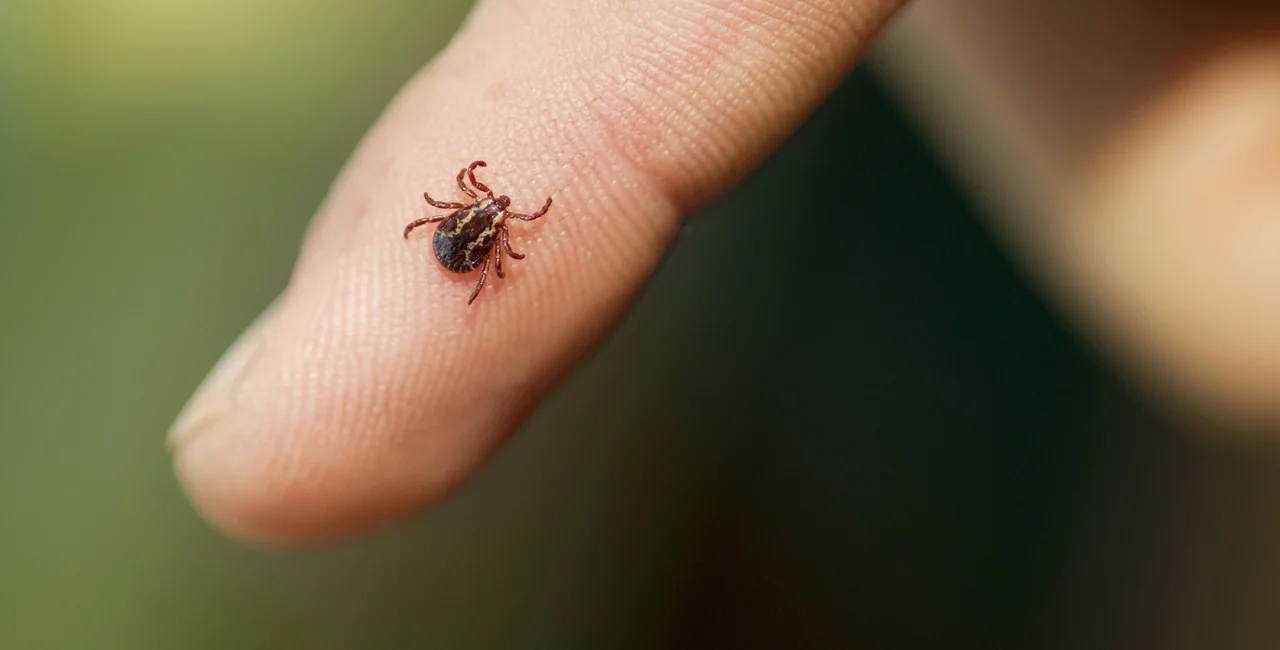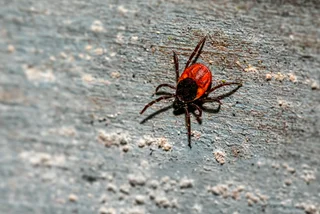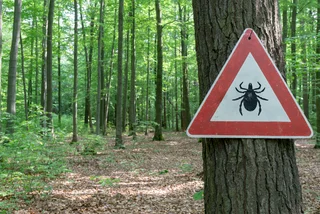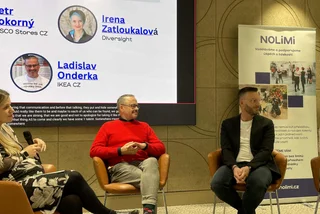The number of cases of tick-borne diseases have significantly increased in the Czech Republic over the first six months of 2022, according to a new survey conducted by MF DNES. Through June, rates of both Lyme disease and tick-borne encephalitis are up in almost all Czech regions.
The highest number of cases for both diseases has been reported in the Czech Republic's South Bohemian region, which has seen 147 cases of Lyme disease and 27 cases of encephalitis over the first six months of 2022.
The number of cases of Lyme disease in the South Bohemian region has more than doubled compared to the first half of last year. While the number of encephalitis cases in the region is roughly the same, other regions are reporting significant upticks.
"At this time last year, we had five cases of tick-borne encephalitis, this year there are already eleven," Aleš Kotrla, a spokesman for the Regional Hygiene Station of the Moravian-Silesian Region, told DNES.
"This year, due to the weather, we have been registering an increased activity of ticks in nature since June, so we expect that the disease will increase."
Other regions have seen similar increases. They expect the trend to continue as higher rates of people head out into parks and forests during the summer months compared to past years.
"Given the fact that many more people than last year are heading to nature for entertainment, sports, or tourism, it is assumed that the number of diseases will continue to increase," says Vendula Ševčíková, a spokesperson for Zlín's Hygiene Station.
While the number of infections rises, however, so do rates of vaccination.
"Compared to previous years, [interest in vaccination] is triple," Petr Šonka, head of the Czech Association of General Practitioners, told DNES.
"Mainly thanks to the fact that vaccines against encephalitis have been covered by insurance companies for people over 50 since January."
Interest in vaccination against tick-borne encephalitis has been on the increase this year, but is still far below other European countries. Around 30 percent of the Czech population is vaccinated against tick-borne encephalitis, compared to 90 percent in neighboring Austria.
Encephalitis vaccination is now completely covered for those over 50 with Czech public health insurance, and partially covered for those under 50. The vaccine typically costs around 800-900 crowns, with public health insurance covering roughly half of it; see our article here for more details.
"I strongly recommend preventive vaccination against tick-borne encephalitis, especially for people over 50 years of age, due to the higher risk of serious disease courses and permanent consequences," adds Renata Ciupek from the Hygiene Station of the South Moravian Region.
Cases of Lyme disease in Czech regions through June, 2021 vs 2022:
| Region | 2021 | 2022 |
|---|---|---|
| Central Bohemian | 41 | 99 |
| South Bohemian | 72 | 147 |
| Karlovy Vary | 27 | 13 |
| Ústí nad Labem | 10 | 37 |
| Liberec | 39 | 50 |
| Hradec Králové | 87 | 105 |
| Pardubice | 20 | 42 |
| Vysočina | 98 | 132 |
| South Moravian | 63 | 63 |
| Olomouc | 36 | 58 |
| Zlín | 41 | 39 |
| Moravian-Silesian | 19 | 23 |












 Reading time: 2 minutes
Reading time: 2 minutes 


































